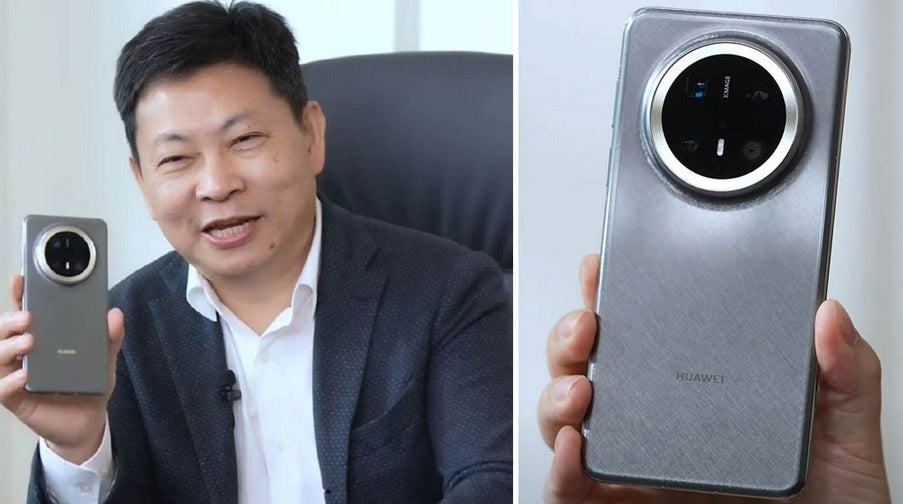Kandabari, India – In a sunny day in the village of Kandabari, in the state of Himachal Pradesh, in northern India, a group of students are learning to code in a classroom.
Kriti Kumari, 19, is one of 31 women at the Sapna Centre, which trains rural women from marginalized backgrounds and encourages them to live off-campus. The centre offers a one-year training programme in which the women learn programming, web design, project management and mathematics, essential for aspiring teachers. The organisation helps others find jobs in India’s IT sector.
“If I didn’t live in Sapna, I would never get married and do household chores,” Kumari, a native of the central Indian state of Jharkhand, who has been away from the centre for four months, told Al Jazeera.
“My dream was against my studying and we had financial problems at home. No, my father supported me and left me here.”
The centre is run by Saji Sapni, a non-profit organisation founded in 2020 by Surabhi Yadav, 32, a former student of the country’s premier engineering college, the Indian Institute of Technology (IIT) in Delhi. It has trained 90 students at present.
For young women like Kumari, coding and programming skills help them access India’s $250 billion IT industry, which employs more than five million people and where women make up 36% of the workforce.
Um prego em TI is Kumari's goal at the end of the course, and it has not been an easy day so far, Kumari said. She had never heard of thermal coding and at first found the concept difficult to grasp.
Language barriers are one of the reasons why women in rural areas are unable to gain exposure to STEM courses, Yadav said.
“If you don’t understand what coding means, how will you learn?” Ella Ubuntu.
In fact, teachers don’t care if students, known as sabniwalis, complete or study a subject, especially since educational standards in rural India can be quite variable. However, interested students must go through the vestibular zone, which checks their English language proficiency and reasoning.
Teachers use local languages from different regions where students see them, including Bundelkhandi, Maghi, Bhojpuri or Hindi, to teach programming languages like HTML, CSS and JavaScript.
Muskan, the Saji program director who goes by only his name, has worked with the organization for two years and believes language is the most important aspect of teaching.
“We use words like abracadabra, rat, and jelly jelly chow to make students understand the basic concepts of programming,” Muskan said, repeating terms and phrases common in children’s stories and cartoon designs popular in many Indian villages.
“Abracadabra and gili gili chu são were used to represent magic. For a while it was a common character in many children’s stories. The reason is simple. “If we use heavy words like function, data and result to teach programming, students won’t understand anything and will end up losing interest in the subject,” she told Al Jazeera.
Meanwhile, the training session where students learn tools like LinkedIn, Microsoft Excel and Word is called “pehelwaani” and not “functional intelligence”. “Pehel” means initiative and “wani” means determination, which means attitude and the ability to take initiative and persistence in solving problems.
This in turn helped women find solutions to the problems they faced in their villages.
Yadav cited the example of former student Anjani Kumari, from Bagmara village in Uttar Pradesh, who last year started using Google Plans to record irrigation services and manage payments for her farm. Similarly, she has introduced a digital system in her village government to record data on children employed or served by her family.
Overcoming difficulties
Preeti Kumari, a native of Bihar, one of India’s poorest states, and a schoolgirl training to become a web developer, recalls her struggle to get it checked. Ela oviu falar gives opportunity through a parent, but many countries would reject the mandala, she told Al Jazeera.
“Entering Sapna Center means a revolution in my family,” Kumari said in the letter signed to reserve his tremor corridor, help him do bad things and accompany him to the center. “And their countries will refuse to be stuck like her for a month before finally changing their minds.”
The dropout rate after class 10 in Bihar is 42%, the highest in the country. Teenage marriage is still very common across the country, with 41% of women married before the age of 19, and many of them never go to college or university.
Most of the women at Sapna’s centre have to navigate social boundaries, resist objections in two countries and, in some cases, escape early marriage – like Kriti Kumari, who was pressured in two countries to marry and only got relief after the bride’s family married. Unhappy with the dowry offered, she called off the marriage, she told Al Jazeera..
“The day my marriage ended, I asked my friend to submit my application to enter Saji Sapni,” she said. She had heard about the centre through another non-profit organisation that funds her school fees.
Since Kriti passed the entrance exam to enter Saji, it took her three months to convince her country to let her in.
Yadav stressed that most girls who see me studying at Saji often face some kind of resistance at home.
“Our country wants them to marry, otherwise they should be safe and we don't want them to take risks to study or work,” Yadav said.
Kajal Uvahadi, 18, studying project management. We saw a community of underprivileged castes in Punjab, who often faced discrimination in their schools growing up.
“Our teachers would never correct us (the children),” she said. “They also kept our distance and we had to sit alone,” she said, referring to the practice of social ostracism that still exists against some caste groups in many parts of India.
Due to ostracism, Uvahadi dropped out of her studies after the seventh series in 2020. But the organization that paid her school fees helped her convince the six nations to leave her to enter the Sapna Center.
“We are among the first Minna in our community to see them studying,” Ofhad told Al Jazeera, referring to herself and three others from her community in her central village. “We are role models now. When I left home to join Saji, he said to me: ‘Ab aaogi to angrezi Seekh kar aana’ or ‘When you come back, make sure you know how to speak English.’”

Expansion plans
Yadav’s first cohort in 2020 consisted of 25 students, including women from the Mishar community in Bihar, among the poorest and most socially excluded castes in India.
She got her first investment through crowdfunding. Her initial goal was to earn Rs 1.5 million (US$18,000), but within three days of launching the campaign, she had raised Rs 2.6 million (US$31,000). It was only family and friends who contributed. Celebrities will also notice and retain your initiative, helping you exceed your goal.
Since then, it has received various exchanges from partner companies, including Nudge, Meta, Social Alpha, CINI, Wingify, and others.
Yadav’s goal is to train at least 20,000 women in the next five years. She told Al Jazeera she wants to focus on two geographic areas so that there is a powerful social transformation that rural women are not expecting. That requires a huge investment — money that, admittedly, they do not have. The one-year residential programme at Sapna costs $1,146 per student. She is considering the idea of setting up non-residential centres where 20 to 25 village women can receive training at a time.
This idea is still in its early stages, and in the meantime, Yadav is approaching his students with the idea of “Every Mother, Every Woman” and asking his mentees to pay the monthly allowance of the paying student, as well as some of the payment for them. Her goal is to strengthen the alumni network to become key investors, influencers and inspirations for future students.
He also asked the families of two current students who pay a monthly tax of $24 for more money to do so, as an experiment to see where the best point would be to support the center's funding needs.
However, in the long run, nothing else will be enough if we want to have a bigger impact, Yadav admitted. The only way to do that is to split two existing government programmes and schemes.
“The government will play a very important role in providing sustainable financing in Saji,” he said.


welcome
Sapna is currently subject to a 75 percent employment tax, and trainees will find jobs in project management, technical fields, and as non-elementary math teachers. But graduates never have the easiest path to finding work. Some will face criticism. Simran, who goes by one name, was contacted several times while looking for a web developer while studying at the center.
Esso raised the issue of employability of two Sapna graduates. Bhavna Arora, deputy director of employee development at an IT company in Delhi, told Al Jazeera that educational training is important.
“No organization will get in (job candidates who are in 10th or 12th grade only). Large and medium-sized companies want their candidates to be less than (university) graduates. If the IT industry is to be formed, education should be related to IT,” she said.
Yadav disagrees. Yadav told Al Jazeera that not having a degree does not mean a lack of skills either, highlighting that engineering graduates who are not at the highest level struggle to find work and that the real problem lies in the quality of education and the general lack of projects.
The biggest problem for Sapni students, Yadav said, is that “your current hiring processes are not designed for diversity and inclusion.” When Saji seeks out organizations for slackers, they ask them to test their skills and not be rigid like paper. “We know we know our skills, so hire us,” she says.
Rather than discourage Simran, they recruited the 23-year-old, and a handful of other women who were also hired by potential employers, to start their own businesses, offering web and app development services. Udyami Technologies is currently building websites for a consulting firm, a nonprofit, and an app that teaches the English alphabet to rural students.
“We hope to be small, this month we have had five projects worth less than $2,500. Our next plan is to register our company and miss out on opportunities and encourage more rural men to go out and work in technology,” Simran told Al Jazeera.



